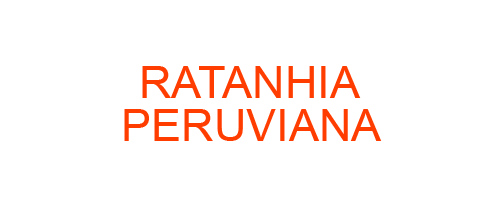Ratanhia peruviana is a homeopathic medicine derived from the dried root of the Ratanhia plant, a shrub native to the Andes mountains in South Americ
Ratanhia peruviana is a homeopathic medicine derived from the dried root of the Ratanhia plant, a shrub native to the Andes mountains in South America. It is commonly used in homeopathic practice for its medicinal properties.
Properties and Preparation:
Ratanhia peruviana is known for its astringent and soothing properties.
It is commonly used in homeopathy to treat conditions affecting the rectum and anus, such as hemorrhoids and anal fissures.
The medicine is prepared through a process of potentization, which involves dilution and succussion (vigorous shaking) of the original substance.
Symptoms treatment and materia medica:
Hemorrhoids: Ratanhia peruviana is often indicated for painful, protruding hemorrhoids that feel like a bunch of grapes. The pain is usually described as a burning or stinging sensation.
Anal Fissures: It is helpful for treating painful anal fissures with intense burning pain during and after bowel movements.
Constipation: Ratanhia peruviana can be used when there is a constant urge to pass stool, but it feels insufficient and remains difficult to expel.
Diarrhea: It can be used for diarrhea with a burning sensation in the rectum and an urgent need to defecate.
Rectal Itching: Ratanhia peruviana is useful for relieving intense itching and burning in the rectum.
Prolapse of Rectum: It can be beneficial when the rectum protrudes during or after passing stool.
Anal Ulcers: It is indicated for painful ulcers in the anus with a burning sensation.
Anal Spasm: Ratanhia peruviana can help ease spasms of the anal sphincter with intense pain.
Rectal Bleeding: It is used when there is bright red bleeding from the rectum, often accompanied by burning pain.
Soreness in Rectum: Ratanhia peruviana can provide relief from soreness and rawness in the rectal area.
Painful Bowel Movements: It is indicated for sharp, cutting pain during and after passing stool.
Proctitis: Ratanhia peruviana can be used for inflammation of the rectum with a burning sensation and pain.
Hemorrhoidal Neuralgia: It is helpful for neuralgic pain associated with hemorrhoids.
Anal Eczema: Ratanhia peruviana can provide relief from eczema or dermatitis in the anal area with intense itching.
Rectal Prolapse in Children: It can be used when the rectum protrudes in children, especially during stool.
FAQ about Ratanhia peruviana:
Q: Is Ratanhia peruviana safe to use?
A: Homeopathic medicines are generally considered safe when taken as directed. However, it is advisable to consult a qualified homeopath for proper guidance.
Q: Can Ratanhia peruviana be used during pregnancy?
A: It is recommended to consult a homeopathic practitioner before using any homeopathic medicine during pregnancy.
Q: Can Ratanhia peruviana be used for children?
A: Yes, Ratanhia peruviana can be used for children, particularly when they experience rectal symptoms such as prolapse or discomfort. However, it is advisable to consult a homeopathic practitioner for appropriate dosage and guidance.
Q: How should Ratanhia peruviana be taken?
A: The dosage and potency of Ratanhia peruviana can vary depending on the individual and the specific symptoms. It is best to consult a homeopathic practitioner for personalized dosage instructions.
Q: Can Ratanhia peruviana be used alongside conventional medication?
A: Homeopathic medicines can generally be used alongside conventional medication. However, it is recommended to inform your healthcare provider about all the medications you are taking, including homeopathic remedies, to ensure there are no potential interactions.
Q: Are there any known side effects of Ratanhia peruviana?
A: Homeopathic medicines are generally considered safe and free from side effects when used appropriately. However, in rare cases, some individuals may experience an aggravation of symptoms. If you notice any unusual or worsening symptoms, it is advisable to consult a homeopathic practitioner.
Q: How long should one take Ratanhia peruviana?
A: The duration of treatment with Ratanhia peruviana can vary depending on the individual and the severity of the symptoms. It is recommended to follow the guidance of a qualified homeopathic practitioner, who will assess your progress and adjust the treatment accordingly.
Books for Reference:
- Materia Medica Pura” by Samuel Hahnemann
- Synoptic Key to the Materia Medica” by Cyrus Maxwell Boger
- Boericke’s New Manual of Homeopathic Materia Medica with Repertory” by William Boericke
- A Concise Repertory of Homeopathic Medicines” by S.R. Phatak
These books provide detailed information on Ratanhia peruviana and other homeopathic medicines, including their indications, symptoms, and characteristics. They can be valuable resources for homeopathic practitioners and individuals seeking information on homeopathy.
Please note that the information provided here is for informational purposes only and should not replace professional medical advice. It is always recommended to consult qualified homeopathic doctors for proper diagnosis, guidance on the use of Ratanhia peruviana and individualized effective homeopathy treatment.

